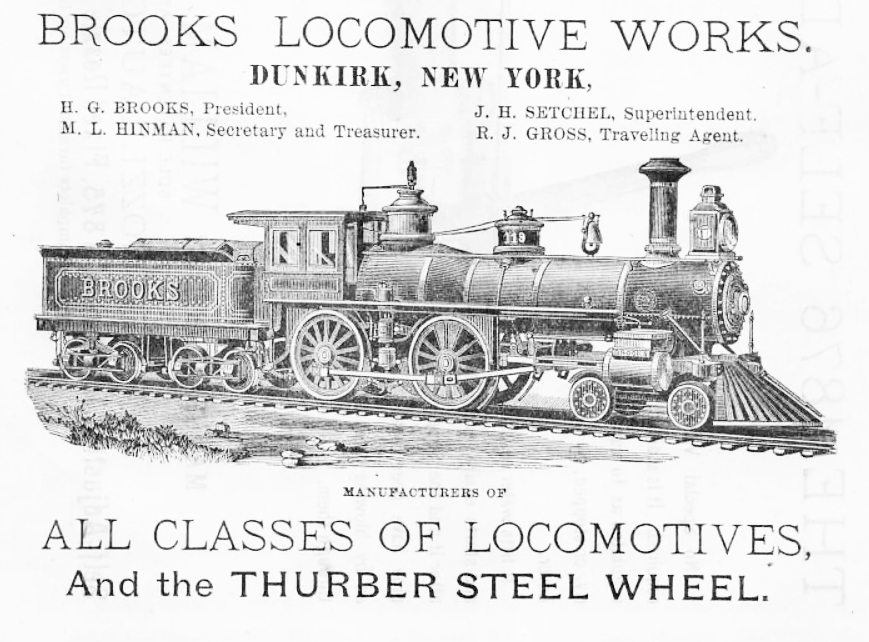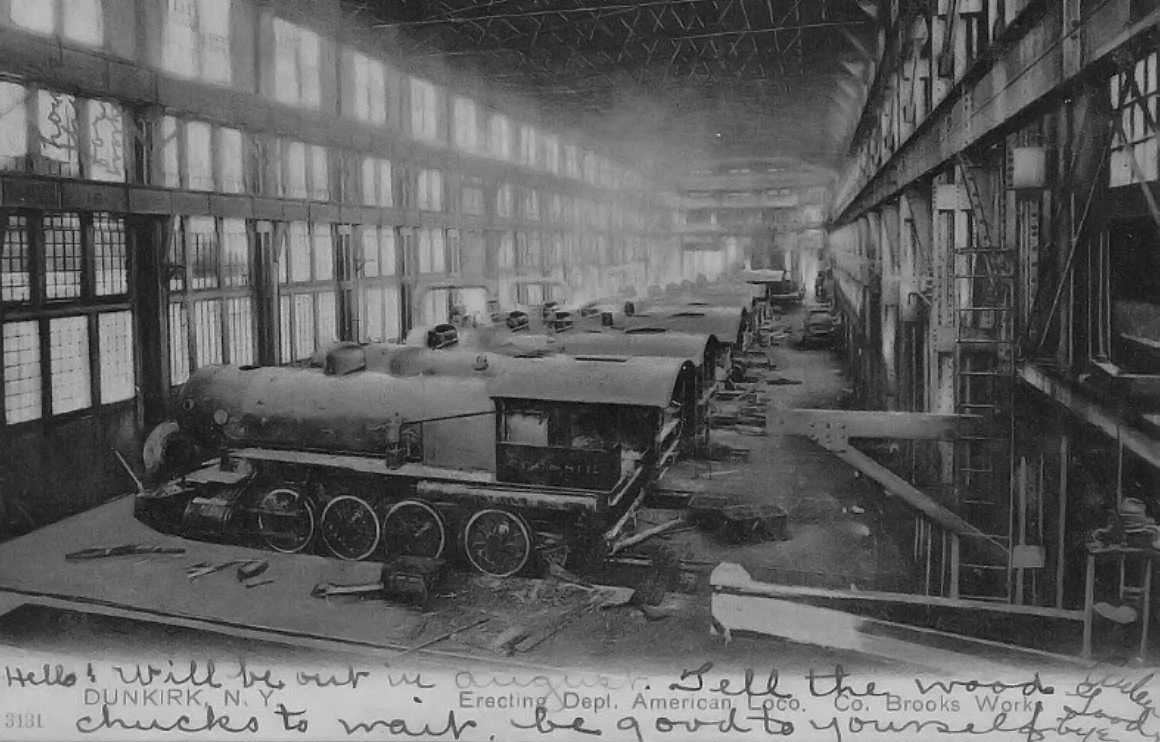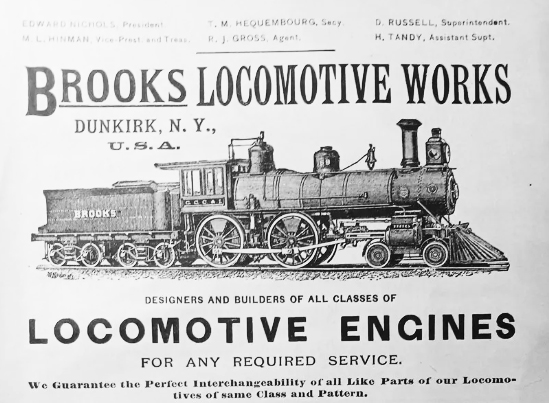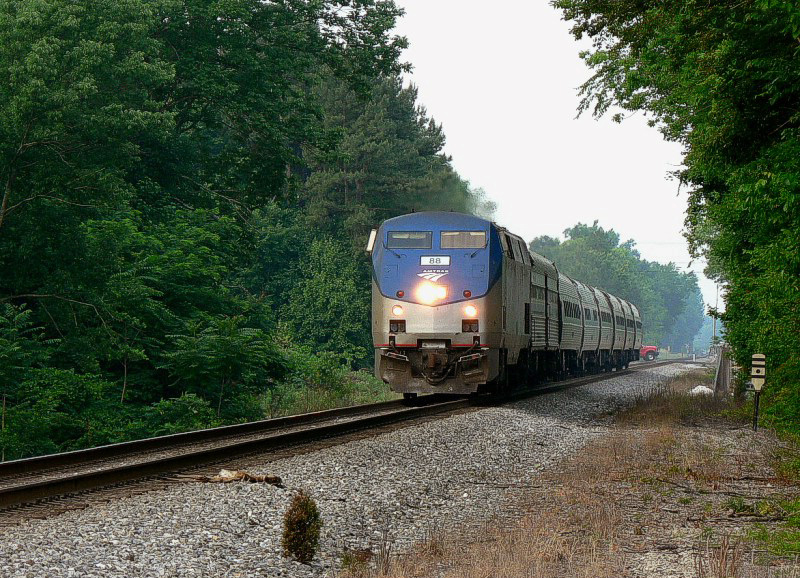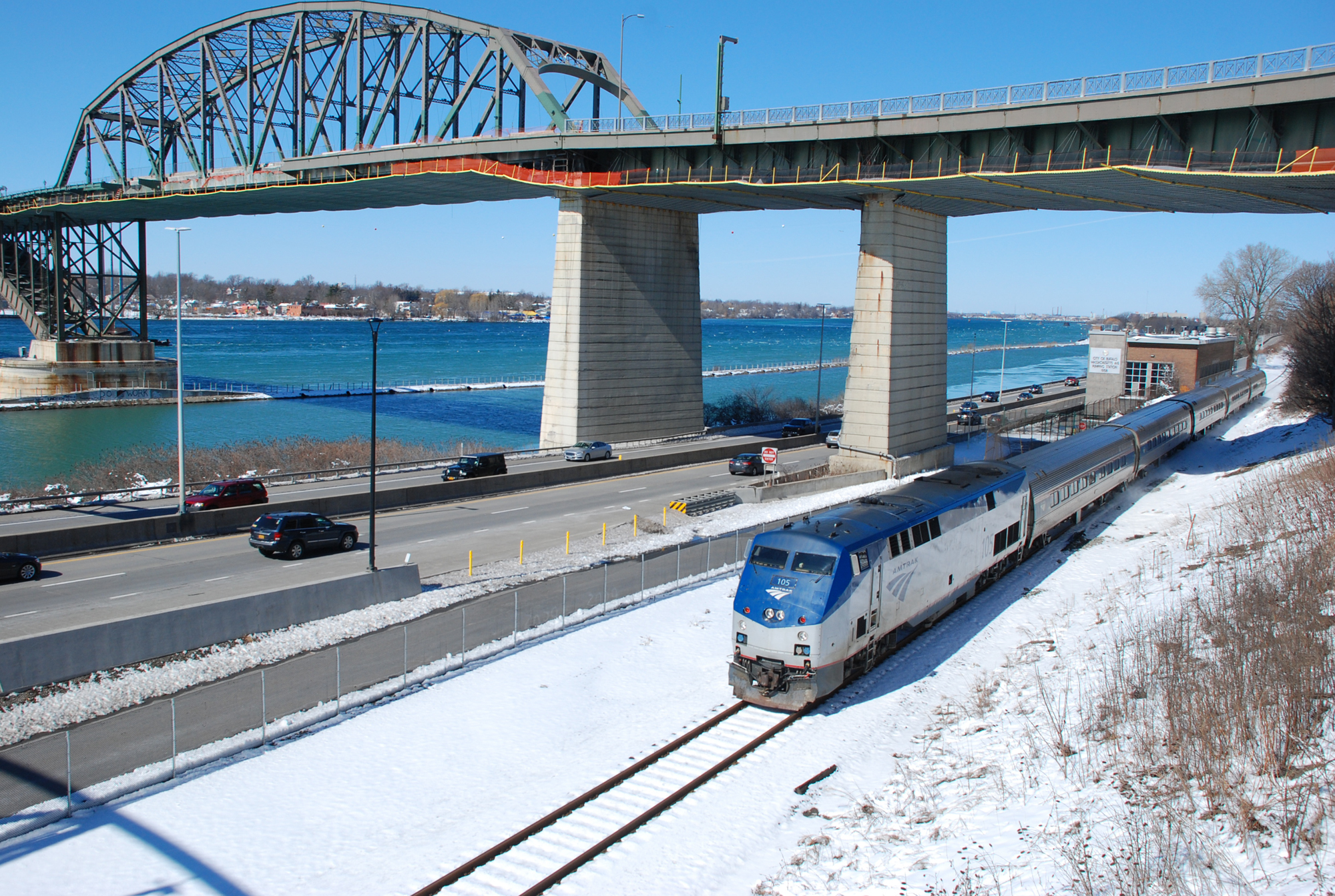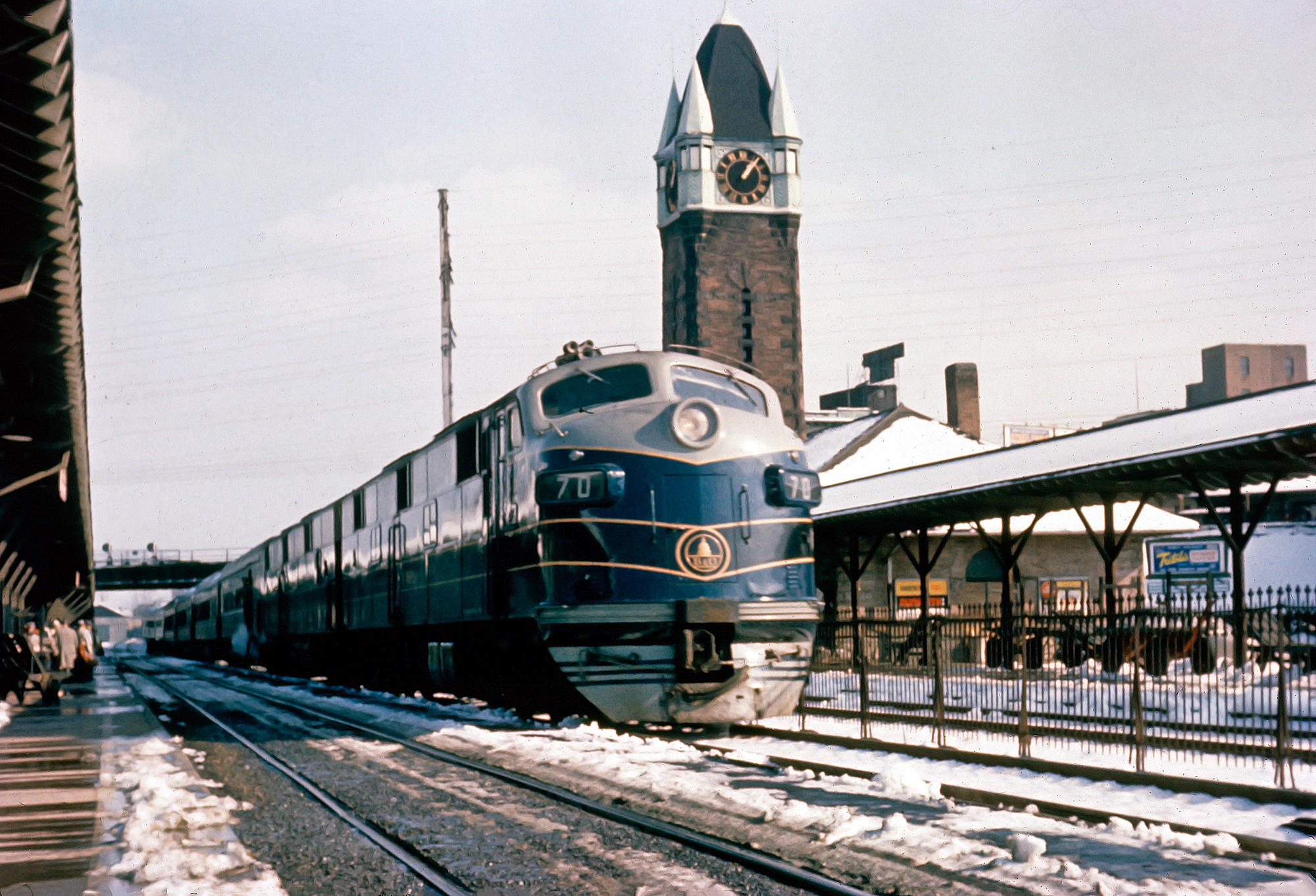Brooks Locomotive Works: 1869-1901
Published: February 19, 2025
By: Adam Burns
The history of the Brooks Locomotive Works is a fascinating chronicle that spans several decades of industrial innovation during the golden age of rail transport in the United States.
Brooks, based in Dunkirk, New York, was one of the pioneering locomotive manufacturers in the country, playing a crucial role in the development and expansion of the railways in the late 19th and early 20th centuries.
It was founded just after the Civil War and produced hundreds of locomotives during a production run that lasted over 30 years as an independent company. It eventually joined several small manufacturers to form the American Locomotive Company in 1901 to more effectively compete against Baldwin and Lima in the hotly contested locomotive market.
Origins and Founding (1869)
The story begins in 1869, a time when America was undergoing rapid industrialization and the expansion of rail networks was crucial for economic growth and development.
The company was founded by Horatio Brook, an experienced engineer and former master mechanic of the New York & Erie Railroad (Erie). Brooks recognized the burgeoning need for reliable, efficient locomotives and took the bold step of establishing his manufacturing company in Dunkirk, capitalizing on its strategic position with access to both raw materials and transportation routes.
Early Years and Growth (1869-1880s)
In 1869 Brooks leased the facilities in Dunkirk from NY&E and established the Brooks Locomotive Works, officially launching the company on November 13, 1869. The following month, Brooks Locomotive Works completed its first steam locomotive for its original client, none other than the New York & Erie.
In a matter of years, Brooks significantly increased production from the NY&E's previous rate of one locomotive per month to as many as seven. The company supplied locomotives to nearly every significant railroad during that era, achieving an output of 37 locomotives in its inaugural year and 43 in the second.
Despite facing diminished demand following the financial panic of 1873, Brooks successfully navigated the economic downturn, avoiding bankruptcy by recovering sufficient business. Brooks locomotives were subsequently exhibited at the National Railway Appliance Exhibition in Chicago, earning distinctions as "Best in Show," and they also received acclamations and awards at the 1893 World's Columbian Exposition.
In its early years, Brooks focused on producing steam locomotives, which were the backbone of rail transportation at the time. The company's initial production facilities were modest, yet the quality and durability of its locomotives quickly gained a reputation for excellence. This reputation was enhanced by Brooks' hands-on experience and engineering acumen, which helped in designing locomotives that met the specific needs of various railroad companies.
During the 1870s and 1880s, the United States witnessed a rail boom, with tracks being laid across vast distances to connect cities, towns, and rural areas. Brooks Locomotive Works seized this opportunity, expanding its operations and increasing production capacity. The company introduced several innovative designs and improvements that enhanced locomotive performance, including more efficient steam engines and better weight distribution.
Innovation and Expansion (1890s)
By the 1890s, Brooks had established itself as one of the key players in the locomotive industry, competing with other giants such as Baldwin Locomotive Works and the American Locomotive Company (ALCO).
In this period, the company introduced several technological advancements, including compound locomotives that utilized steam more efficiently and larger, more powerful locomotives designed to handle heavier loads on steeper grades.
The company was particularly renowned for its custom-built locomotives, tailor-made to meet the unique requirements of its clients. This flexible approach not only set Brooks apart from its competitors but also allowed it to maintain a steady stream of orders.
In 1891, it manufactured 226 new locomotives, but by 1894, output had plummeted to just 90. In 1895, the company's reputation received a boost when one of its locomotives set a land speed record for rail vehicles, reaching 92.3 mph on the Lake Shore & Michigan Southern Railway (LS&MS) on October 24, 1895.
Furthermore, Brooks garnered acclaim for producing exceptionally large locomotives towards the close of the 19th century, supplying record-setting models for the Great Northern and Illinois Central. Despite such achievements, the company struggled to rebound from economic hardship as it had done previously.
Following the death of Horatio Brooks in April 1887, leadership passed to his son-in-law, Edward Nichols. Nichols' tenure ended with his death on January 7, 1892, after which Vice President Marshall L. Hinman assumed the presidency. Hinman stepped down in December 1896, and the role was taken over by another son-in-law, Frederick H. Stevens, who guided the company until the 1901 merger with Alco.
After briefly participating in a widespread machinists' strike in May, the firm was ultimately consolidated with several other manufacturers in 1901 to establish the American Locomotive Company (Alco). The final Brooks-manufactured locomotive, bearing serial number 3883 and built for the LS&MS, was completed on June 22, 1901.
Merger and Formation of ALCO (1901)
While the Alco merger marked the end of Brooks as an independent entity, it was a strategic move that positioned the new conglomerate as a formidable force in the industry, second only to Baldwin in terms of production capacity and market reach.
Under the Alco banner, Brooks' legacy endured as the Dunkirk plant continued to produce locomotives consistent with its tradition of quality and customization. The merger bolstered the company's resources and technological prowess, facilitating the development of more advanced steam locomotives and later transitioning into the era of diesel-electric locomotives.
Post-merger, the Brooks plant was responsible for fulfilling one of the earliest contracts secured by Aloco, producing fifteen 2-8-0 locomotives for the Mexican Central Railroad. The facility continued to manufacture locomotives until 1934, when it was rebranded as Alco's Thermal Products Division. Subsequent locomotives from the former Brooks facility were identified as Alco-Brooks designs.
While the production of new locomotives ceased at the Dunkirk facility, the workforce remained engaged in producing spare parts for existing Alco locomotives. The plant eventually shifted focus from locomotive manufacturing to producing heat exchangers, high-pressure vessels, and various piping systems. Post-World War II, the Dunkirk plant's output never returned to prewar levels, ultimately leading to its closure by Alco altogether in 1962.
Alco's Postwar Era and Decline (1950s-1960s)
In the post-war era, the dominance of diesel-electric technology solidified. Alco, along with other industry players, shifted its focus entirely to diesel-electric locomotive production, a transition that proved challenging as competitors like EMD rapidly advanced in this domain.
Despite a handful of successful models and technological breakthroughs, Alco struggled against the dominant market position of competitors, leading to a gradual decline throughout the 1950s and 1960s until the company ceased producing locomotives entirely in late 1968.
Legacy
The Brooks Locomotive Works left an indelible mark on the locomotive manufacturing industry. Despite the eventual decline and cessation of operations, the legacy of innovation and quality production resonated throughout the industry.
The emphasis on custom-built locomotives and the pioneering spirit that started with Brooks himself continued to influence locomotive design and production methodologies long after the company ceased operations.
Furthermore, artifacts and locomotives from Brooks' productive years have been preserved in museums and collections across the United States, standing as testament to the technical prowess and engineering excellence of the era.
The company's contributions helped shape the development of the American rail network, supporting economic growth and facilitating travel and commerce across the burgeoning nation.
Recent Articles
-
Guide To Amtrak/Passenger Trains In North Carolina
Apr 11, 25 02:18 PM
North Carolina's passenger rail services provide a convenient and enjoyable means of traveling within the state and to neighboring regions. Learn more here. -
Guide To Amtrak/Passenger Trains In New York
Apr 11, 25 02:02 PM
Find out where you can ride both intercity, and regional, passenger trains throughout New York in this guide. -
Guide To Amtrak/Passenger Trains In New Jersey
Apr 10, 25 09:40 PM
This guide highlights passenger train services currently available throughout the state of New Jersey.
